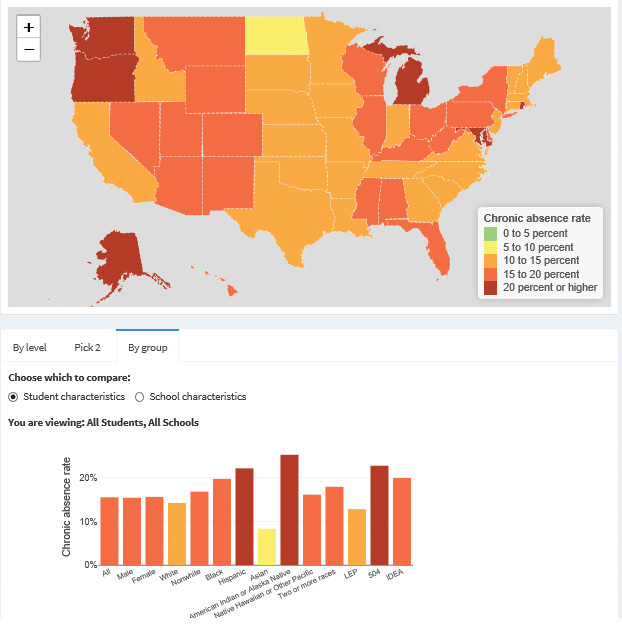Data is knowledge. And knowledge is power – power that enables us to understand issues more clearly and solve problems more effectively. That’s why the newly released report, “Data Matters: Using Chronic Absence to Accelerate Action for Student Success,” is likely to prove so valuable to our work at Bold Goals Education.
 One of the most exciting aspects of the report by Hedy Chang, Lauren Bauer and Vaughan Byrnes is that it includes the release of a new interactive map of chronic absence data across the United States. The map was created by the Hamilton Project at the Brookings Institution using national data reported by school districts to the U.S. Department of Education Office of Civil Rights. The data is from the 2015-2016 school year and represents what is surely the most complete compilation of this type of information to date. The map’s interactive features allow users to explore rates of chronic absence at the school, school district, state and national level, and to break those rates down according to student characteristics and types of schools.
One of the most exciting aspects of the report by Hedy Chang, Lauren Bauer and Vaughan Byrnes is that it includes the release of a new interactive map of chronic absence data across the United States. The map was created by the Hamilton Project at the Brookings Institution using national data reported by school districts to the U.S. Department of Education Office of Civil Rights. The data is from the 2015-2016 school year and represents what is surely the most complete compilation of this type of information to date. The map’s interactive features allow users to explore rates of chronic absence at the school, school district, state and national level, and to break those rates down according to student characteristics and types of schools.
Data such as this is critical to helping the Bold Goals Coalition of Central Alabama formulate and shape key strategies that will reduce the number of students who are chronically absent in our schools. Data has taught us that chronic absence is linked to a wide variety of academic and out-of-school challenges that children face. Research has shown, for example, that:
- Children living in poverty, who lack access to health care or suffer from environmental hazards, poor transportation, community violence or unstable housing, are two to three times more likely to be chronically absent from school and to lack the resources to recover from lost learning.
- Missing 10% of the school year (just two days a month) can dramatically inhibit the learning process.
- If too many students miss too much school, it affects the whole classroom because the learning environment is a delicate ecosystem.
While this new interactive map by the Hamilton Project is not a solution unto itself, it is an excellent tool that can help empower schools, school systems, students, teachers and parents with deeper insight needed to reduce absenteeism and thereby change the trajectory of many Central Alabama students for the better.

